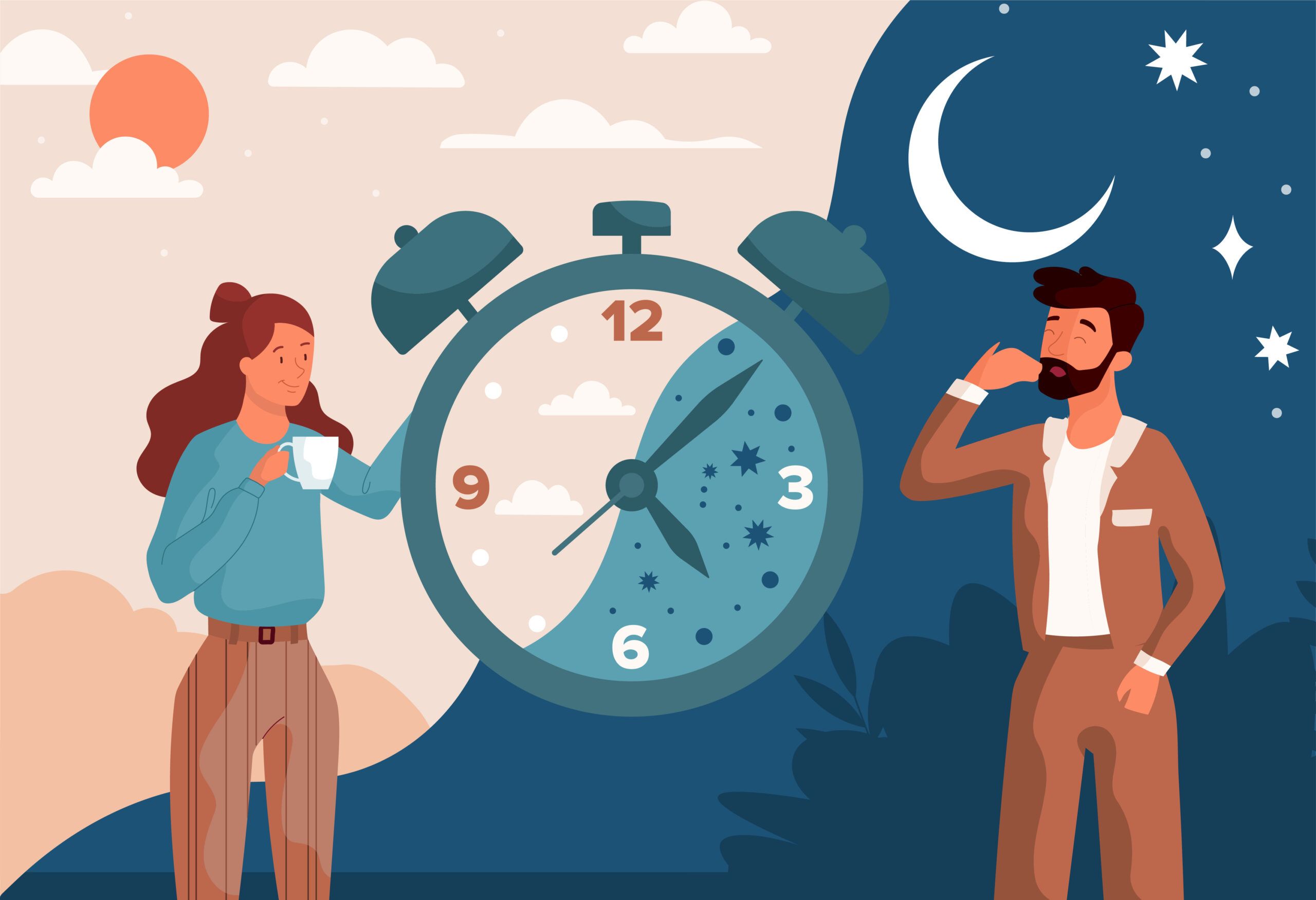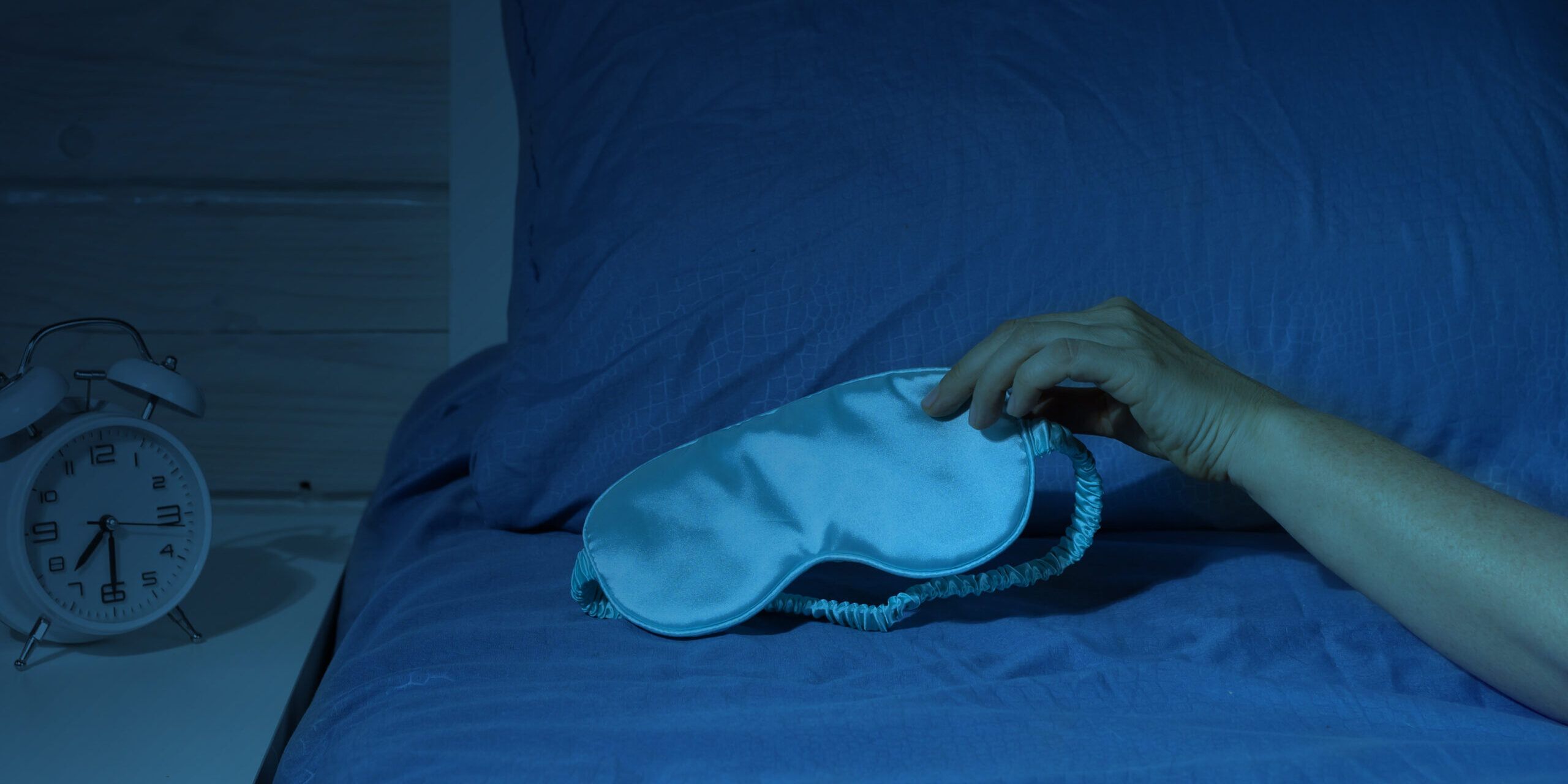Circadian Rhythm and Human Health
Tim Hyatt, ND
Circadian Rhythm and Human Health
by Tim Hyatt, ND
To better understand human behavior and health it’s necessary to acknowledge the importance of biological rhythms in health assessments. Chronobiology (the study of rhythmic influences on biological systems) is an integral part of human health, though is rarely discussed in mainstream allopathic medicine.

Three external environmental factors have an impact on the human body—intensity and duration of light, absence of light, and (to a lesser extent) temperature. The earth’s rotation, its axis, and position in the solar system generate ultradian, diurnal, circadian, infradian, and circannual rhythms, which result in changes of light and temperature on a daily basis and throughout the year. The cyclical periods studied in chronobiology are as follows:
- Ultradian : cycles that occur throughout the 24-hour time period
- Diurnal : light/dark periods making up the 24-hour cycle
- Circadian : 24-hour cycles
- Infradian : cycles longer than one day. Female menstrual cycles are an infradian cycle
- Circannual : yearly cycles
Short- and long-term changes in temperature and light and the duration thereof generate specific physiologic responses in the human body. For example, short term shifts in light and temperature alter diurnal functions in the body and influence sleep cycles. Long term changes in temperature and light, such as the onset of spring result in higher levels of physical activity and increase the production of vitamin D3.
It’s important to acknowledge external cyclical influences such as light and temperature and it should be noted that the human body develops responses to those stimuli and creates rhythms of its own.

The Master Clock—Suprachiasmatic Nucleus
The body possesses many “clocks” or regulators of biological function that respond to genetic and environmental influences. The master clock is located in the suprachiasmatic nucleus (SCN) of the hypothalamus. This group of cells controls rhythms of core body temperature (CBT), regulates rest and activity, and physiological and behavioral functions throughout the body with the goal of maintaining homeostasis.
The SCN relies on light to function. Light exposure on the retina results in a signal which is passed through the retinohypothalamic tract to the SCN. Light is the major external synchronizer of the master clock. Internal synchronizers include temperature, meal timing, social interaction, exercise, and daily routines.
Circadian Rhythm and the Nervous System
It is well established that mood disorders are associated with circadian rhythm dysfunction. The production and release of neurotransmitters such as serotonin, melatonin, dopamine, norepinephrine, glutamate, and GABA, are regulated in part by light exposure and by endogenous signals and behaviors of the individual.

Biological Rhythms Affect the Endocrine System
The endocrine system responds to nervous system inputs and directs biological functions via hypothalamic and pituitary release of hormones such as cortisol, DHEA, and sex hormones. All of these hormones are released in a rhythmic fashion in direct response to ultradian, diurnal and circadian signals.
In turn, the release of hormones like cortisol, DHEA, and sex hormones affects mood, sense of well-being, behavior, libido, and physical activity. An interesting example of circalunar change was observed in a study in 2013 . Cajochen et al found that the lunar cycle modulates melatonin release and human sleep. This was the first documented study to show that the moon phase has a direct effect on sleep.
The Gastrointestinal System and Circadian Rhythm
Circadian rhythms regulate much of gastrointestinal function, including cell proliferation, motility, digestion, absorption, and electrolyte balance. Disruption of these rhythms can have adverse consequences including the promotion of and/or exacerbation of a wide variety of gastrointestinal disorders and diseases.
Biological Rhythms May Have Psychological Influences
Environmental cycles have a powerful effect on how one perceives the world. This can alter stress mechanisms which regulate cortisol and catecholamine production, in turn having a powerful effect on all bodily functions. For example, a person who is prone to depression may struggle with the low light and cold weather in northern climates which may create levels of stress that perpetuate low mood and depression.
Conclusion
Biological rhythms are highly complex processes that affect human health in dynamic fashion. A well-rounded, functional, and holistic approach to patient care acknowledges the need to help individuals identify how their body is responding to and creating biological rhythms that affect overall health.
One way this can be accomplished is through sex and adrenal hormone testing. Hormone tests like the DUTCH Complete™ offer information about the overall diurnal pattern of free cortisol and cortisone, and the total distribution of cortisol metabolites as well as melatonin production. Providers can further investigate the HPA axis through the DUTCH Plus® , which includes the cortisol awakening response (CAR).
References
- Albrecht U. Circadian clocks and mood-related behaviors . Handb Exp Pharmacol. 2013:227–39.
- Bechtel W. Circadian Rhythms and Mood Disorders : Are the Phenomena and Mechanisms Causally Related? Front Psychiatry. 2015;6:188.
- Çalıyurt, Okan 1,* Role of Chronobiology as a Transdisciplinary Field of Research: Its Applications in Treating Mood Disorders;Balkan Med J. 2017 Dec; 34(6): 514–521.
- Cajochen, Christian, Altanay-Ekici, Songul, Münch, Miriam, Frey, Sylvia, Knoblauch, Vera, Wirz-Justice, Anna; Evidence that the Lunar Cycle Influences Human Sleep ; Current Biology VOLUME 23, ISSUE 15, P1485-1488, AUGUST 05, 2013 Published:July 25, 2013.
- Draper C.F., Duisters K, Weger B., Chakrabarti A, Harms A.C., Brennan L, Hankemeier T, Goulet L., Konz T., Martin F.P., Moco S. & van der Greef J.; Menstrual cycle rhythmicity: metabolic patterns in healthy women, Nature; Published: 01 October 2018.
- Filipa Rijo-Ferreira & Joseph S. Takahashi; Genomics of circadian rhythms in health and disease ; Genome Medicine Published: 17 December 2019: https://rdcu.be/c9RrB
- Goel Namni, Dinges David F.; Circadian Rhythms in Sleepiness, Alertness, and Performance; Principles and Practice of Sleep Medicine (Fifth Edition), 2011.
- Hampp G, Albrecht U. The circadian clock and mood-related behavior . Commun Integr Biol. 2008;1:1–3.
- Swartz Frank E, HA, Kupfer DJ. Interpersonal and social rhythm therapy : managing the chaos of bipolar disorder. Biol Psychiatry. 2000;48:593–604.
- Reis D.J. a b, N.H. Bahraini a b c, P. Yen d, T.T. Postolache d e,; Body rhythms/biological clocks ; Reference Module in Neuroscience and Biobehavioral Psychology 2022.
- Scheiermann Christoph,* Kunisaki,Yuya, and Frenette, Circadian control of the immune system, Nat Rev Immunol. 2013 Mar; 13(3): 190–198.
- Vitaterna MH, Takahashi JS, Turek FW. Overview of circadian rhythms . National Institute on Alcohol Abuse and Alcoholism. 2001;25:85–93. [PMC free article] [PubMed] [Google Scholar].
- Voigt Robin, Forsyth, Christopher B, and Keshavarzian Ali; Circadian rhythms: a regulator of gastrointestinal health and dysfunction ; Expert Rev Gastroenterol Hepatol. 2019 May; 13(5): 411–424.
- Ziemssen,Tjalf 1, Kern,Simone, Psychoneuroimmunology--cross-talk between the immune and nervous systems , J Neurol. 2008 Feb;255(2):309-10.
TAGS
Women's Health
Men's Health
Sleep
Perimenopause
HPA Axis
Cortisol Awakening Response
Menopause